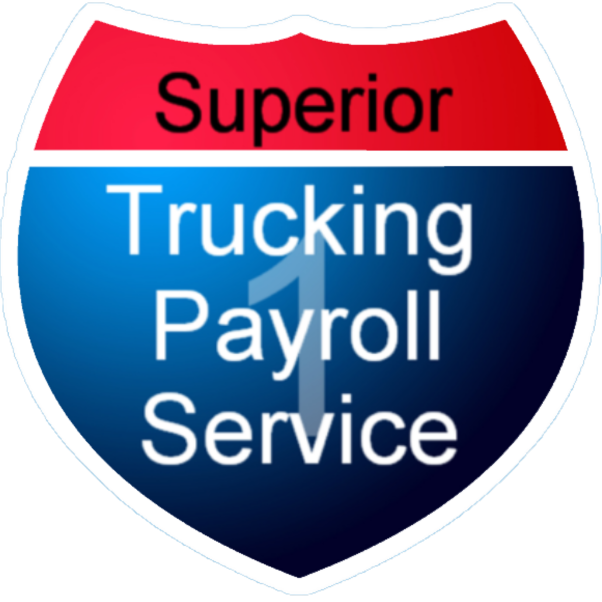Do your truck drivers earn sick time?
How do you calculate hours worked when drivers aren’t paid by the hour?
Many trucking companies in Michigan are asking the same thing.
In February 2025, big changes hit the state’s Earned Sick Time Act (ESTA). These new rules mean almost every company must track sick time — even for drivers paid by the mile or the load.

In this article, we’ll explain what the new law says, why it’s a challenge for trucking companies, and how you can track sick time the right way — without changing how you pay your drivers.
What Is Michigan’s Earned Sick Time Act? (2025 Update)
Michigan’s new ESTA rules went into effect on February 21, 2025. Here’s what employers need to know:
- Employees earn 1 hour of paid sick time for every 30 hours worked.
- If you have more than 10 employees, drivers can earn up to 72 hours per year.
- If you have 10 or fewer, the cap is 40 hours.
- You can front-load the full amount of sick time at the start of the year — but if you do, you must audit at year-end.
- Only salaried employees are exempt from these tracking rules.
- Not getting overtime does not make someone exempt.
That last point matters most. If your drivers are paid by the mile, by the load, or a flat rate, they’re not salaried — and you must track their hours.
Why Sick Time Tracking Is Hard for Trucking Companies
Most industries track sick time by the hour. But in trucking, that’s not how drivers are paid.
You might be asking:
- “My drivers are paid by the mile. How do I count their hours?”
- “If we don’t track hours now, do we have to start?”
Yes — unless your drivers are true salaried employees, you need to track “hours worked” to stay compliant.
That’s where the real challenge begins.
How to Calculate Hours Worked for Sick Time Accrual
Figuring out how many hours your drivers actually “worked” can be confusing — especially when you don’t pay them by the hour. But Michigan’s 2025 ESTA rules require it. The good news is, you don’t need to change how you pay your drivers — you just need a consistent way to track their time.
Don’t Assume Non-Hourly Drivers Are Exempt
Many trucking companies think they’re off the hook because their drivers don’t get overtime or aren’t paid hourly. But that’s not how Michigan’s law works.
If a driver is:
- Paid by the mile
-
Paid
per load - On a flat daily or weekly rate
…they’re still considered non-salaried — and you must track their hours for sick time. Only true salaried employees are exempt under the new rules. Just skipping overtime doesn’t count.
So if your drivers aren’t on a formal salary, Michigan expects you to calculate how many hours they worked.
Use Truck Driver ELD Data: On-Duty Time + Driving Time
The easiest and most reliable way to track hours for sick time is using your Electronic Logging Devices (ELDs). These devices already record the key info you need.
Here’s what to do:
- Pull each driver’s on-duty hours for the pay period (includes time spent inspecting, fueling, waiting, etc.)
- Add their driving hours
- The total = their “work hours” for sick time tracking
This approach keeps you compliant without needing to guess or change your pay structure. Just make sure you’re keeping records throughout the year.
Example:
On-duty: 12 hours
Driving: 38 hours
Total work hours: 50 hours
Sick time earned: 50 ÷ 30 = 1.66 hours
Now, if tracking hours sounds like a hassle, there’s another option — front-loading. Let’s look at how that works next.
Should You Front-Load Sick Time Instead?
To skip all that tracking, you might consider front-loading the full 72 hours (or 40, if you’re a smaller company).
This can work — but there’s a catch:
That means giving drivers the full amount of sick time up front each year.
- You must audit those hours at the end of the year.
- If a driver didn’t work enough hours to “earn” the full 72, you’ll need to correct it.
- You must keep a record of these hours all year long — even if you front-load.
It’s easier upfront, but you’ll need a good tracking system to back it up.
Can You Use a PTO Policy Instead?
Yes, and this can make things simpler.
Michigan allows companies to combine sick time with vacation and personal time into a single PTO (Paid Time Off) policy — as long as it meets or beats ESTA’s rules.
Just a few things to remember:
- Call it Paid Time Off, not “personal time” or “vacation”.
- You can also front-load PTO if that works better for your setup.
- You’ll still need to track PTO used and PTO available — and keep records.
This option works well if you already offer vacation or flex time and want to simplify how you handle time off.
What If You Don’t Track Hours Now?
That’s common in trucking — but now you’ll need a plan.
Here’s what we suggest:
If You are a Client with Superior Trucking Payroll Service:
- Add a column in your payroll spreadsheet for hours worked.
- Use ELD data: On-Duty + Driving = Total Hours.
- Also include sick time used when drivers take it.
- We’ll track hours and run reports for you.
- You stay compliant — without changing how you pay your drivers.
Note: This tracking is for sick time records only. It won’t change wages or trigger overtime.
How Superior Trucking Payroll Service Helps You Stay Compliant
We know trucking — and we understand how tricky these new laws can be.
That’s why we offer:
- Sick time tracking for non-hourly drivers
- Flexible systems for mileage, load, and hourly pay types
- Reports you can use for audits and year-end reviews
- Support with PTO setup and front-loading policies
We help you track — you stay focused on the road.
The Bottom Line for Michigan ESTA and Your Truck Drivers
Now you know how to calculate sick time for truck drivers under Michigan’s 2025 ESTA. Whether your drivers are paid by the mile, load, or flat rate, they still need to have hours tracked — and you now have a clear method for doing it.
Many trucking companies assume these rules don’t apply because they don’t pay hourly or overtime. But unless a driver is truly salaried, Michigan still requires you to track and report hours worked for sick time.
Start pulling on-duty and driving time from your ELD logs and add those hours to your payroll records. That way, you’re ready to track accrual and stay compliant all year long.
At Superior Trucking Payroll Service, we don’t guess — we guide. When you send us your drivers’ hours, we’ll help track and report sick time correctly through your payroll system, so you’re always one step ahead of the law.
And if you’re looking for a trucking-specific payroll partner who understands the ins and outs of laws like ESTA, check us out — we might just be the right solution for your fleet.
Written by Mike Ritzema
Before founding Superior Trucking Payroll Service, Mike was the CFO of a trucking company with 80 trucks and a thriving brokerage. This experience gave him the perspective that a payroll solution has to make the lives of the office people better. All the solutions he has designed are to benefit everyone. Our company mission is to help trucking families and that includes the company owners, the drivers, and the office.

